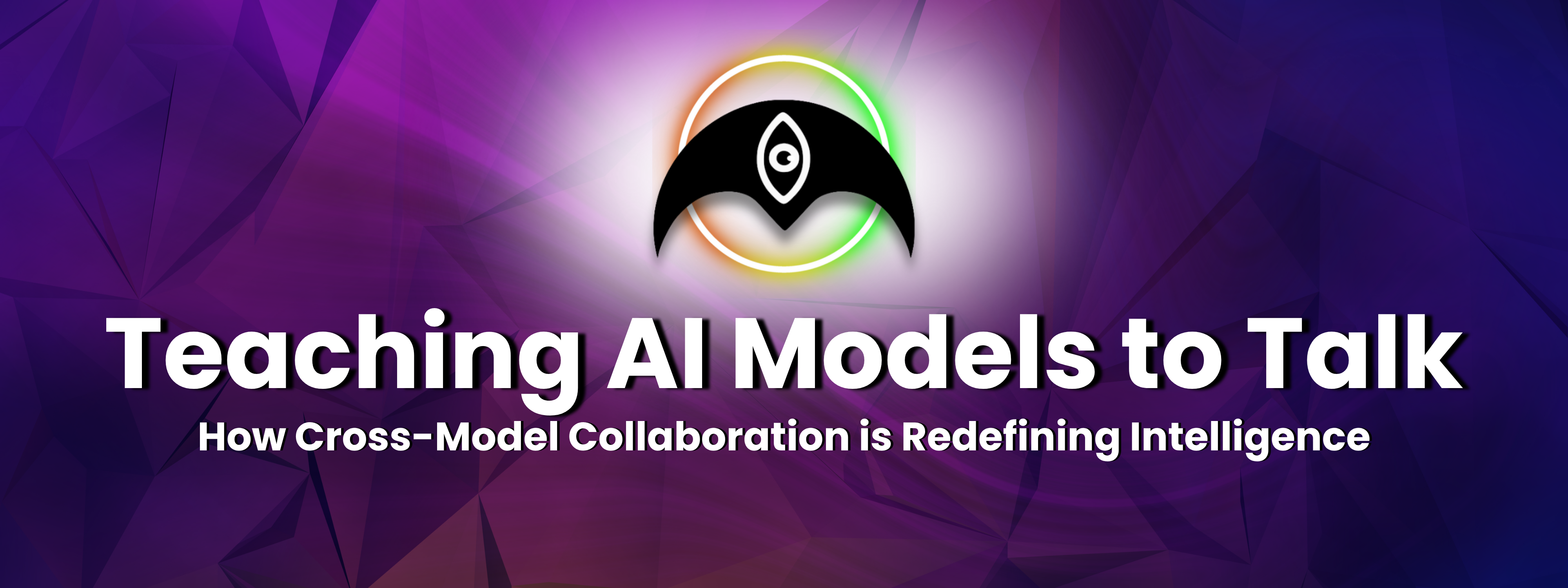TL;DR
Cross-model collaboration is the future of AI. By letting models communicate, critique, and co-create, Kumari AI delivers responses that are smarter, fairer, and more reliable, proving that the best intelligence isn't solitary, it's shared.
Teaching AI Models to Talk: How Cross-Model Collaboration is Redefining Intelligence
For years, we've treated AI models like isolated geniuses, each trained in its own sandbox, optimized for a narrow goal, and deployed as a self-contained oracle.
But real intelligence rarely thrives in isolation. Collaboration sparks perspective. At Kumari AI, we believe the next leap in artificial intelligence isn’t about building a bigger model, it’s about teaching models to work together.
We call this cross-model collaboration: enabling multiple large language models (LLMs) to cooperate, critique, and co-create before delivering a final, unified answer. The result? More robust reasoning, more reliable creativity, and smarter decisions, in real time.
Why Single-Model Intelligence Falls Short
Each frontier model brings unique strengths, and its own blind spots:
| Model | Strength | Limitation |
|---|---|---|
| Chatgpt | Exceptional reasoning and structure | Can be verbose |
| Claude | Empathic and instruction-following | Occasionally too cautious |
| Gemini | Outstanding multimodal understanding | Still maturing in reasoning |
| Grok | Fast, efficient, and lightweight | Limited context retention |
Relying on one model is like asking a single expert to run an entire company.
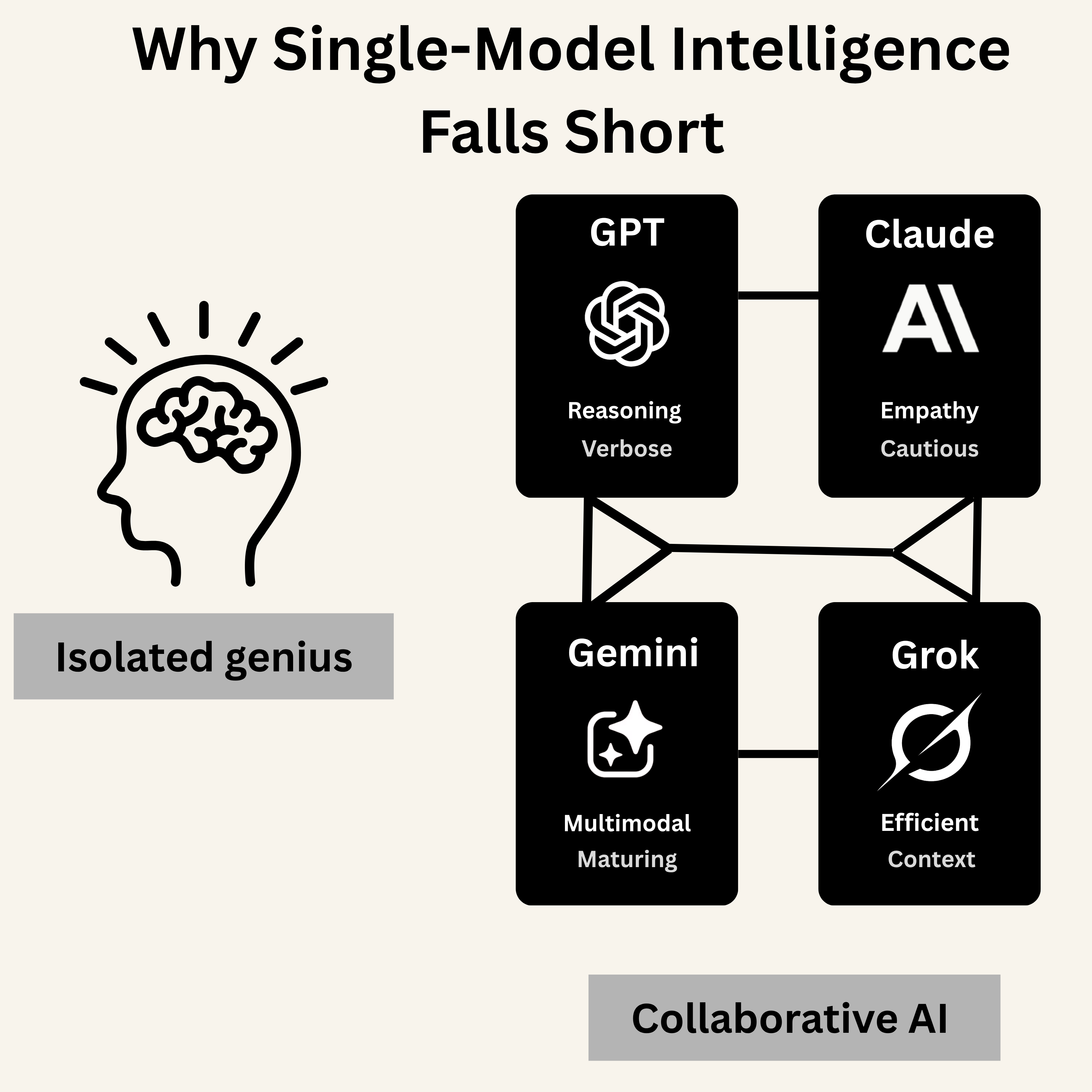
What if your AI could assemble a council of models, each contributing its own perspective before reaching a consensus?
The Rise of Cooperative Inference
Cooperative inference allows multiple AI systems to jointly evaluate, refine, and validate an answer before it reaches the user, like a digital roundtable.
Imagine this in action:
A healthcare assistant where one model analyzes medical data, another checks clinical guidelines, and a third ensures clarity for patients.
Together, they produce safer, clearer, and more trustworthy outcomes.
At Kumari AI, we make this happen in milliseconds, transforming isolated responses into collaborative intelligence.
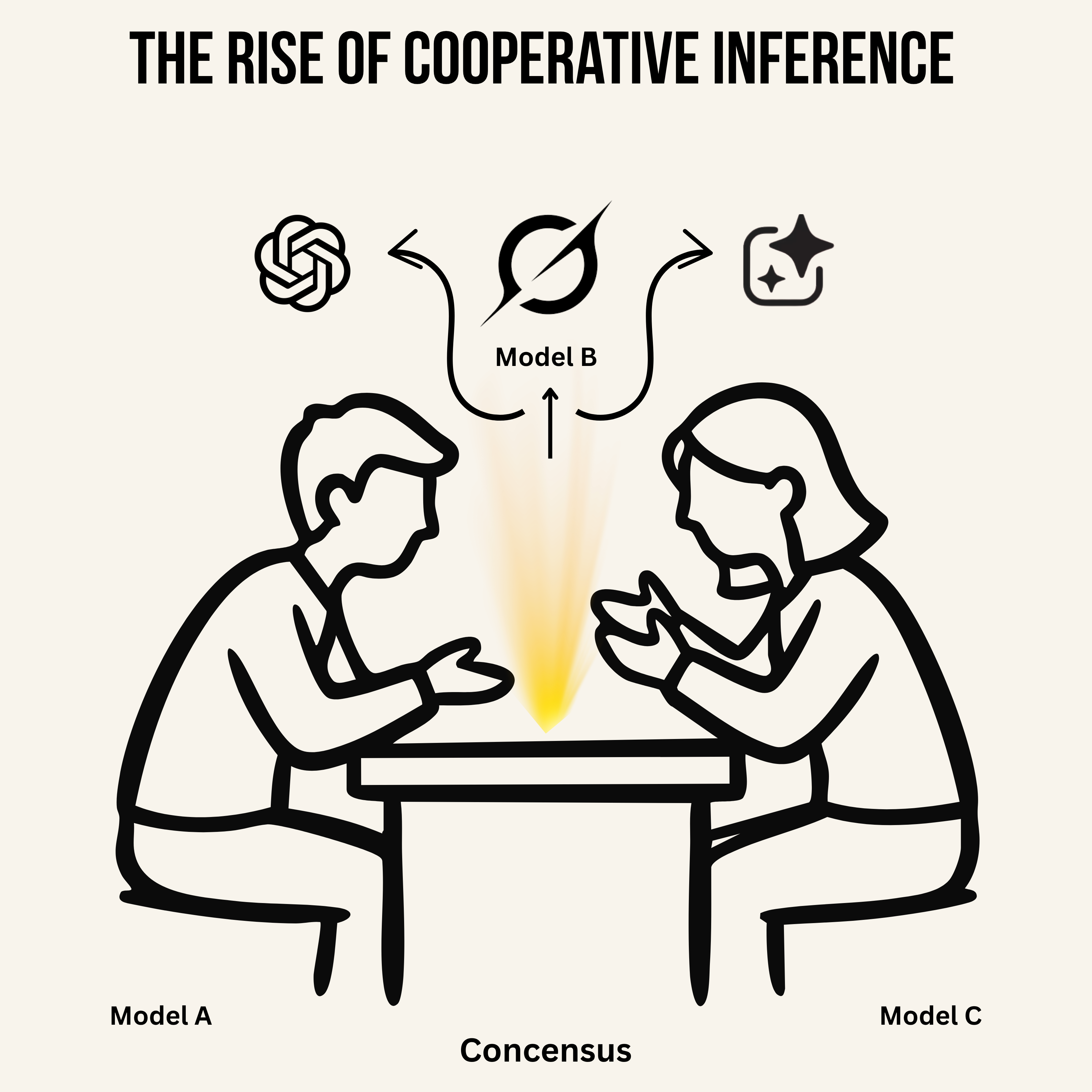
Strategies for Model Collaboration
- Mediation — Model-to-Model Dialogue
- Voting — Consensus by Committee
- Chaining — Sequential Specialization
A mediator (like Kumari’s router) listens to multiple model outputs, compares reasoning paths, and
synthesizes a refined result.
Ideal for complex prompts, ethical dilemmas, or creative generation.
Example: One model provides concise logic, another adds emotional tone, the mediator blends both for a
balanced, human-sounding response.
Multiple models respond independently, then a ranking or voting mechanism selects the most reliable
answer.
Think of it as democratic intelligence, where truth emerges from convergence.
This approach reduces hallucination and increases consistency across diverse reasoning styles.
Models collaborate in sequence: one extracts, another interprets, another expresses.
This mirrors real-world pipelines, where specialists pass context, not just text.
- In an analysis workflow, one model retrieves data, another summarizes insights, and a third turns them into a clear narrative.
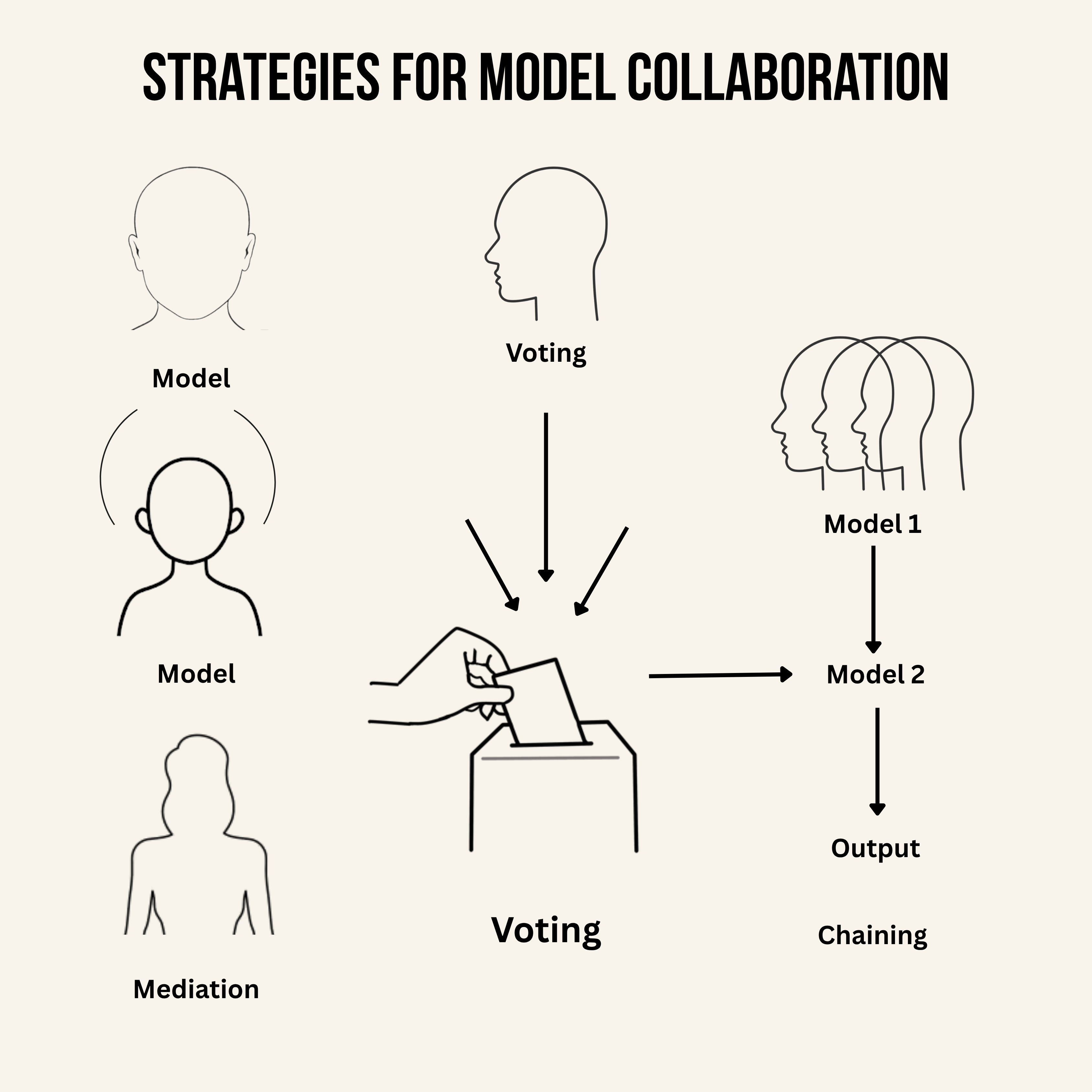
Kumari AI: The Orchestrator of Model Cooperation
Kumari AI’s intelligent router doesn’t just pick the “best” model, it enables them to work together
intelligently.
It dynamically determines when a single model is sufficient and when an ensemble approach delivers better
outcomes.
- Parallel & Sequential Inference: Multiple models operating together or in sequence for layered reasoning.
- Confidence Scoring & Feedback Loops: Evaluates consistency and correctness across outputs.
- Learning-Based Routing Intelligence: Continuously improves by analyzing model performance across domains.
In essence, Kumari AI transforms model diversity into cooperative intelligence, at scale. It’s not about replacing models; it’s about orchestrating them.
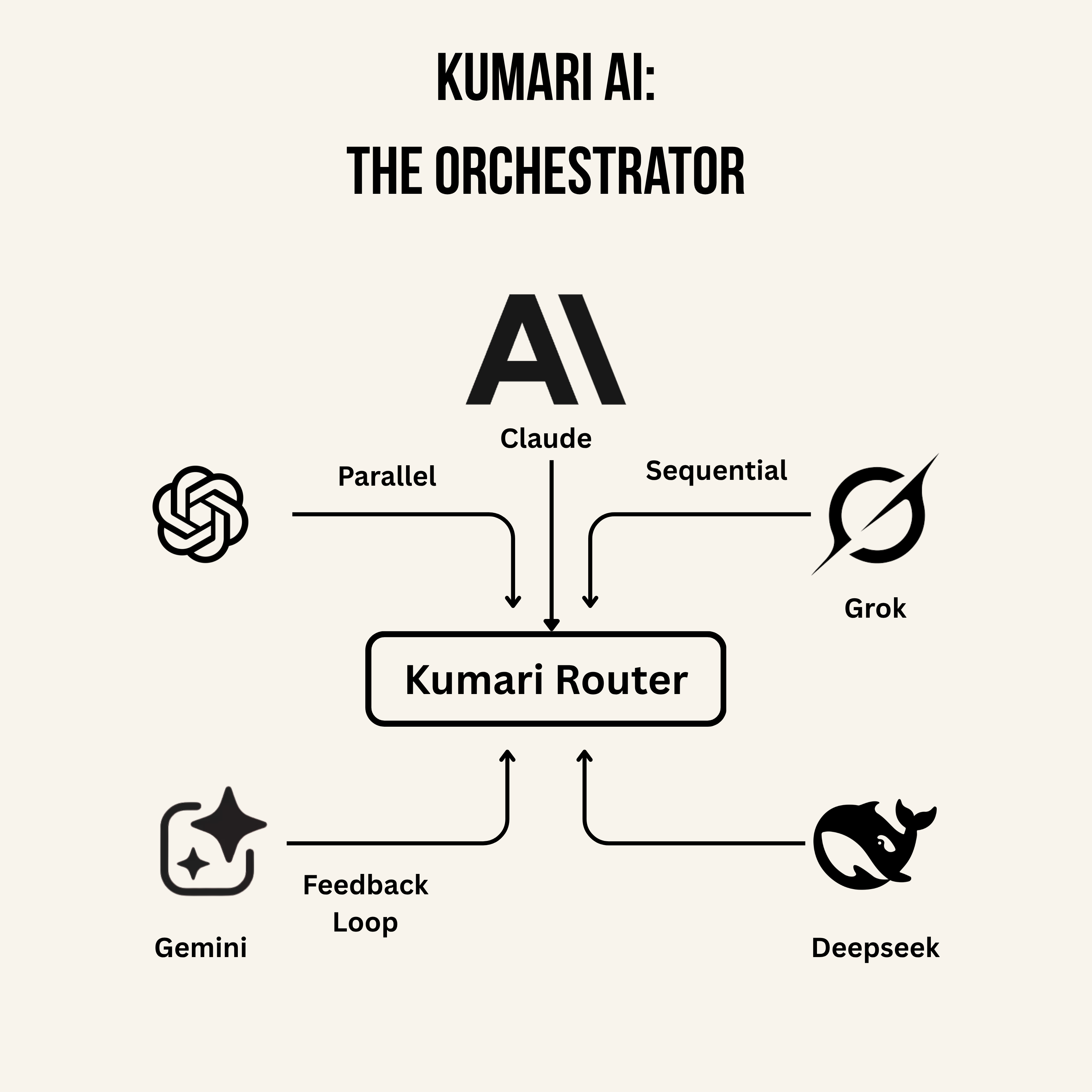
Why Cross-Model Collaboration Matters
| Benefit | Description |
|---|---|
| Accuracy | Reduces hallucinations by validating answers through multiple perspectives. |
| Resilience | If one model fails or slows, others seamlessly compensate. |
| Adaptability | Dynamically routes tasks across academic, creative, and technical domains. |
| Cost Optimization | Uses lightweight models for simple tasks and ensembles for critical ones. |
| Transparency | Tracks reasoning paths, providing explainable decision trails. |
Together, these benefits enable AI systems that are safer, faster, and more context-aware, a leap toward reliable, enterprise-grade intelligence.
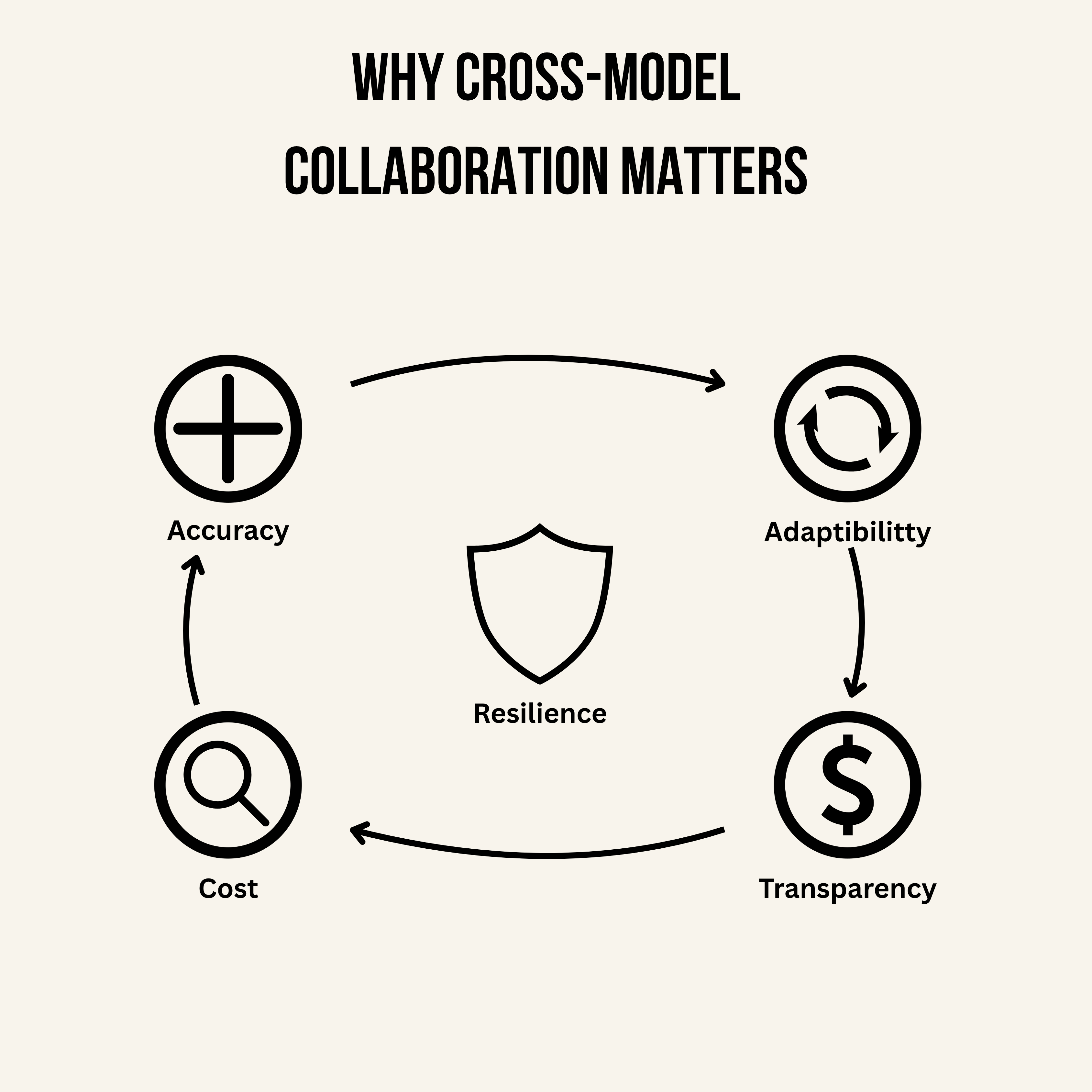
Toward a Networked Intelligence Future
The future of AI isn’t about which single model “wins.”
It’s about how models collaborate, exchange signals, and reach equilibrium, a digital version of scientific
consensus.
Just as human societies evolved through cooperation, AI ecosystems will evolve through communication, with
Kumari AI as the connective tissue.
Closing Thought
In the age of solitary models, intelligence was measured by performance.
In the age of connected models, it will be measured by collaboration.
Welcome to the era of AI synergy, where machines don’t just think; they co-think.
Learn More
Discover how Kumari AI is building the world’s first adaptive multi-model router, enabling seamless
collaboration across GPT, Claude, Gemini, Mistral, DeepSeek, and more.
👉 Explore Kumari AI or Contact Us to see how cross-model cooperation can transform your AI
systems.

